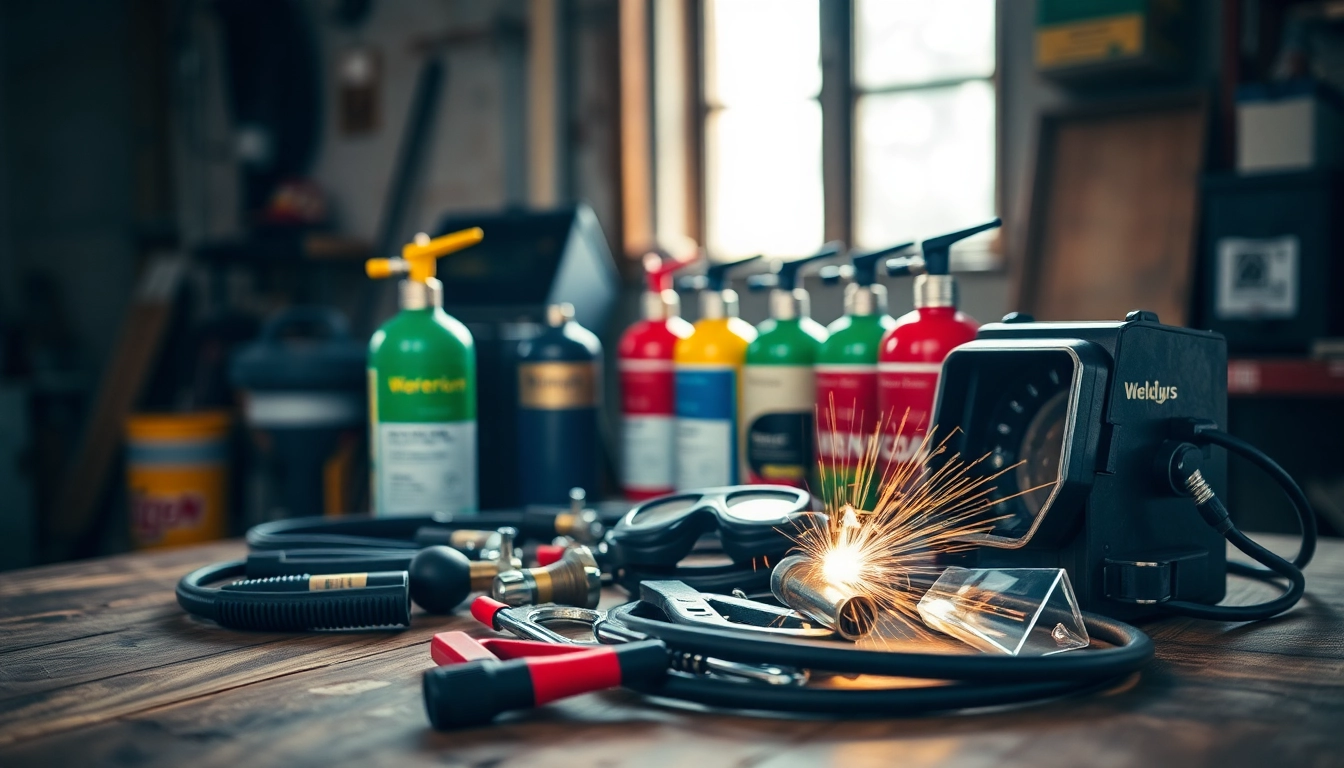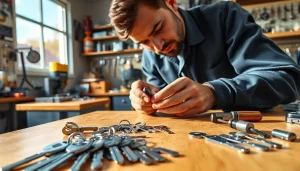Essential Guide to Choosing the Perfect Oxy Gas Welding Kit for Your Needs
Understanding Oxy Gas Welding Kits
Oxy gas welding, also known as oxy-acetylene welding, is a popular method used in various industries including automotive, metal fabrication, and shipbuilding. This process utilizes a combination of oxygen and acetylene to create a high-temperature flame suitable for welding and cutting metals. A complete oxy gas welding kit is essential for anyone looking to perform these tasks effectively and safely. In this article, we will delve into the various aspects of oxy gas welding kits, covering everything from their components to safety considerations and maintenance tips.
What is an Oxy Gas Welding Kit?
An oxy gas welding kit is a comprehensive package that contains all the necessary tools and equipment required for oxy-fuel welding. At its core, the kit typically includes an oxygen cylinder, an acetylene cylinder, a welding torch, regulators for controlling gas pressure, hoses for gas transportation, and various welding tips. The combination of oxygen and acetylene generates a flame that can reach temperatures over 3,000 degrees Celsius, making it suitable for welding, cutting, and brazing tasks.
Components of a Complete Oxy Gas Welding Set
A complete oxy gas welding set usually encompasses the following components:
- Oxygen Cylinder: Contains high-purity oxygen used to support combustion.
- Acetylene Cylinder: Holds acetylene gas, which burns at high temperatures.
- Welding Torch: The tool where the gases mix and ignite, producing a focused flame.
- Regulators: Devices that control the flow and pressure of gases from the cylinders.
- Hoses: Flexible tubes that transport the gases from the cylinders to the torch.
- Nozzles: Attachments that help shape the flame for various welding applications.
- Welding Goggles and Gloves: Essential safety gear to protect the user’s eyes and hands.
The Importance of Quality in Oxy Gas Welding Kits
Choosing a high-quality oxy gas welding kit is critical for both performance and safety. Poorly made kits can lead to gas leaks, inconsistent flames, and ineffective welding results. Quality kits often feature durable materials, reliable connections, and well-designed regulators that ensure a stable gas supply. Investing in a reputable brand not only enhances the user experience but also minimizes potential hazards associated with gas welding.
Types of Oxy Gas Welding Kits
Heavy-Duty vs. Lightweight Oxy Gas Welding Kits
Oxy gas welding kits come in various configurations, typically categorized as heavy-duty or lightweight kits. Heavy-duty kits are designed for extensive industrial use, capable of handling thicker materials and prolonged operations. They generally include larger gas cylinders, more robust welding torches, and additional accessories.
On the other hand, lightweight oxy gas welding kits are ideal for home use, hobbyists, or small-scale projects. These kits are compact, portable, and easier to handle, although they may have limited capabilities when it comes to welding thicker metals.
Best Applications for Different Oxy Gas Kits
Heavy-duty oxy gas welding kits are best suited for welding applications in manufacturing and construction, where strength and durability are paramount. These kits can efficiently weld materials like steel and cast iron.
Lightweight kits are great for creative projects, small repairs, and maintenance work. They work well for lighter metals such as aluminum, brass, and thin sheets of steel, making them versatile for DIY enthusiasts.
Understanding Different Nozzle Sizes and Their Uses
Nozzles play a crucial role in oxy gas welding, as they determine the flame’s size and intensity. Different welding tasks require specific flame characteristics, which can be achieved by selecting the appropriate nozzle size:
- Small Nozzles: Best for precision work, such as welding thin metal sheets.
- Medium Nozzles: Versatile for general welding tasks, suitable for materials of moderate thickness.
- Large Nozzles: Ideal for heavy-duty operations, allowing for greater heat output necessary for thick materials.
Choosing the Right Oxy Gas Welding Kit
Key Features to Look For in an Oxy Gas Welding Kit
When selecting an oxy gas welding kit, consider the following features:
- Regulator Quality: Look for precise pressure gauges for accurate gas flow control.
- Material Durability: Ensure the hoses and torches are made from high-quality materials to withstand high temperatures and pressures.
- Ease of Use: A kit with an intuitive design will enhance usability, especially for beginners.
- Warranty and Support: A good warranty can provide peace of mind and replace parts in case of defects.
How to Assess the Value of an Oxy Gas Welding Kit
Value in an oxy gas welding kit is determined by quality, included features, and performance metrics relative to the price. Evaluate the components included against your needs; a kit that includes additional accessories can save costs in the long run. Additionally, research customer reviews and ratings to gauge the efficacy and reliability of the kit.
Top Brands in Oxy Gas Welding Kits and Their Offerings
Several brands are revered in the oxy gas welding space:
- Victor: Known for high-quality welding gear that balances performance and durability.
- Harris: Offers a wide range of kits catering to different needs, highly rated for affordability.
- Lincoln Electric: Well-known for innovative features and robust designs.
- Camdex: Popular for entry-level kits suitable for beginners.
Safety Tips for Using Oxy Gas Welding Kits
Essential Safety Equipment for Oxy Gas Welding
Safety must be a priority when using oxy gas welding kits. Essential safety gear includes:
- Welding Goggles: Protects eyes from harmful UV light and flying sparks.
- Flame-Resistant Gloves: Prevent burns from hot materials or sparks.
- Protective Apron: Offers additional protection against sparks and heat.
- Proper Footwear: Steel-toed shoes can protect feet from falling objects.
Common Hazards and How to Avoid Them
Several hazards are associated with oxy gas welding, including:
- Gas Leaks: Regularly check connections and hoses for leaks before use.
- Oxygen-Enriched Atmospheres: Avoid welding in confined spaces without proper ventilation.
- Fire Hazards: Keep flammable materials away from the welding area and always have a fire extinguisher readily available.
Post-Use Safety Precautions for Oxy Gas Welding
After using your oxy gas welding kit, adhere to these safety precautions:
- Turn off gas supplies at both cylinders and the torch.
- Release any remaining pressure in hoses and regulators.
- Store the kit in a cool, well-ventilated area, away from direct sunlight.
Maintaining Your Oxy Gas Welding Kit
Regular Maintenance Checks You Should Perform
Regular maintenance is crucial for the longevity and safety of your oxy gas welding kit:
- Visual Inspections: Regularly check hoses for cracks or wear.
- Gauge Readings: Monitor gas levels and replace cylinders when nearing empty.
- O-Ring Checks: Inspect and replace O-rings on regulators and hoses to prevent leaks.
Storage Tips to Prolong the Life of Your Oxy Gas Kit
Proper storage of your oxy gas welding kit can significantly extend its lifespan:
- Store cylinders upright, secured to prevent tipping.
- Keep hoses coiled neatly to avoid kinks and damage.
- Use storage cases for small attachments to prevent loss or damage.
When to Replace Components of Your Oxy Gas Welding Kit
Recognizing when to replace parts of your oxy gas welding kit is essential:
- Replace hoses over five years old or at the first sign of deterioration.
- Change regulators showing signs of wear or irregular gauge readings.
- Replace nozzles that are clogged or damaged to ensure optimal performance.



